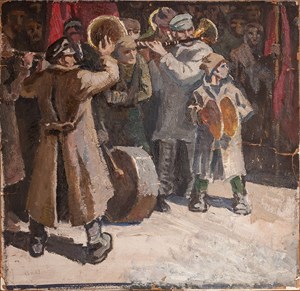
The Museum of Odessa Modern Art sets a goal to preserve artefacts of Odessa non-official art from the last decades of the Soviet power as well as new Odessa art during its origin and development stages in modern Ukraine.
The Museum of Odessa Modern Art (MoOMA), the first museum of modern & contemporary аrt in Ukraine, was founded on April 10, 2008, by Vadim Morokhovsky, a businessman and a public figure. The Museum of Odessa Modern Art sets a goal to preserve artefacts of Odessa non-official art from the last decades of the Soviet power as well as new Odessa art during its origin and development stages in modern Ukraine. To establish the museum fund, V. Morokhovsky acquired a unique collection by artists of the “second wave of Odessa avant-garde” of the 1970s amassed by Mikhail Knobel, a famous collector.
The museum fund’s sections continue to expand with works dedicated to the main trends and movements in Odessa art of recent decades: conceptualism and transavantgarde art of the 1980s, neo-conceptual art of the 1990s, and the newest art of the 2000s. The section dedicated to nonconformist art of the 1960s – 1970s has been expanding with representative exhibits as well. Apart from the permanent exposition, the Museum undertakes various projects (exhibition, research and education, etc.) to develop and raise awareness of modern and contemporary art in the region and introduce Odessa art to the All-Ukrainian and international art world.
The state does not support the museum in hosting international art. As a result, it tends to concentrate on Ukrainian art with a particular focus on local Odessa artists. It also supports young, up and coming artists from the local area.
This year the museum celebrates its 10th anniversary. ArtDependence caught up with Museum Director Semen Kantor to talk about the institution’s role in contemporary Ukraine, its collection and local art scene.
ArtDependence (AD): What is the role of the museum in modern society? How has this role changed recently?
Semen Kantor (SK): The mission of the museum has always been: to collect, preserve, study, show and teach in the relevant sphere of human culture. In this respect, only the methods have changed. Modern museums are trying to be more democratic and open, but this is not a new role. This is simply a new method to fulfil the same mission.
AD: Tell us about the museum's collection. What works are you especially proud of? How was the museum collection created and how is it being replenished?
SK: The activities of our museum - the Museum of Odessa Modern Art, meet the common goals described above, but focus particularly on the visual art of Odessa. Since our country, or I would actually say, countries, of which Odessa was a part, express almost no interest in our own contemporary culture, we consider it necessary to engage in the gathering and display of art from the second half of the 20th century and modern art from the 21st century. This art is unofficial for our state now too , but in fact it is fairly well known or has the opportunity to become famous in the world. The MoOMA funds were created in order to preserve unofficial artwork of Odessa’s artists (mostly non-conformist). Most of the work was part of the collection of the famous collector Mikhail Knobel. They were acquired by the Museum’s Founder who was a businessman and culture master named Vadim Morokhovsky. Currently, these works do not exceed 30% of the museum fund. Our founder continues to purchase and donate modern art works to the Museum. Often, artists and private collectors will display their work and archive materials at our museum. I am very proud of the recent acquisitions to the collection. For example, we have recently received a work from the famous Odessa artist Alexander Roitburd titled The Langour of Jacob and Rachel, 1989. We have also acquired Adolf Loza’s The Revolutionary March, 1968.

Vadim Morokhovsky and Mikhail Knobel. Opening of MoOMA. April 10, 2018.
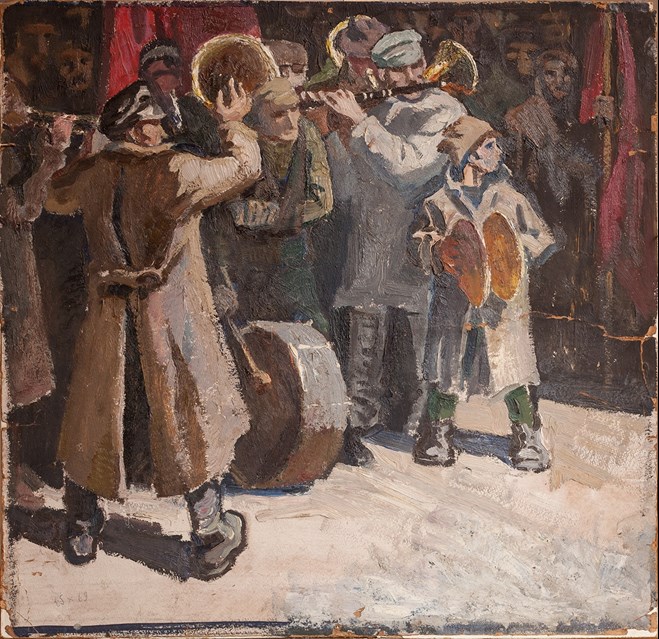
Adolf Loza. Revolutionary March, 1968.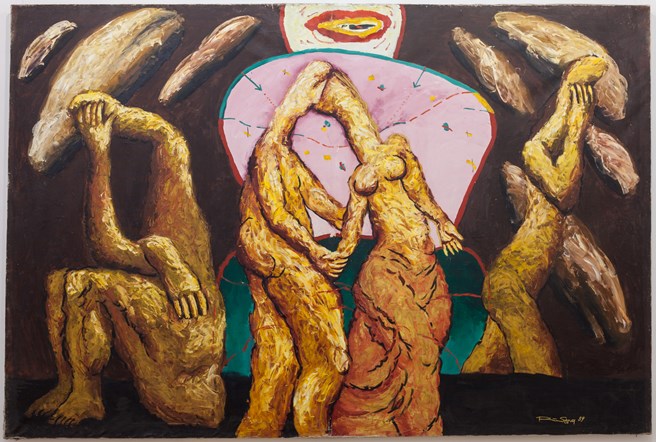
Alexander Roitburd. The Langour of Jacob and Rachel, 1989.
AD: How do you attract young people (visitors under 30) to the museum? Do you have special programs / applications for young people?
SK: We attract younger audiences by being different. MoOMA is the only, albeit regional, museum of contemporary art in the Ukraine. Naturally, we primarily focus on young people and this is mutual. We do not have any special programs aimed at young people, although most of the exhibitors and viewers in our Centre for Creative Initiatives, the Artery, are young people.
AD: If you had an unlimited budget, what exhibition would you show?
SK: It’s not just a question of budget and organisation limitations, we’re also limited by the premises themselves. At the moment we are only capable of housing small exhibitions such as:
Being realistic, even these exhibitions would require serious modernisation of the premises including microclimate, security etc.
If we are able to build new venues on the site of some of the museum buildings which are at our disposal, this would ensure that we created a modern museum complex. Naturally, it is necessary to minimize the input of the State as much as possible.
It would also be interesting to organize a representative exhibition of world avant-garde artists or to present work from the group known as the "Young British Artists". This is a modern classic. The Ukraine is so circumvented by world-class exhibitions, especially of contemporary art, that any big project would be in the top ten. And in Odessa, it is even more restricted than in Kiev.
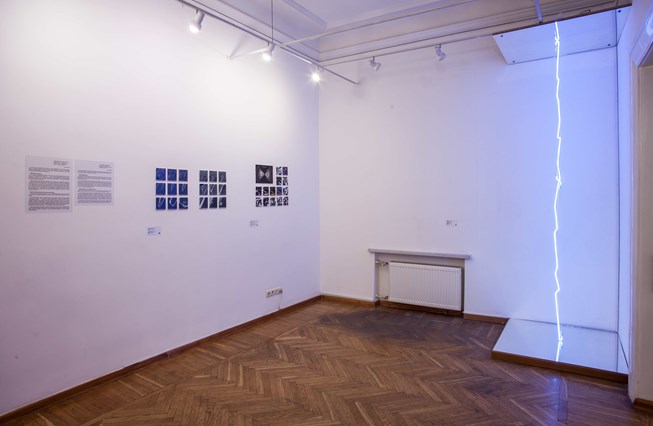
Art and Science. The interior of one of the halls.
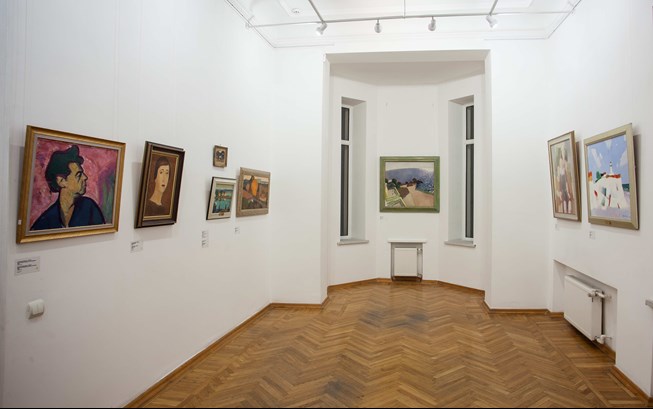
Odessa Modernism. Interior of one of the halls.
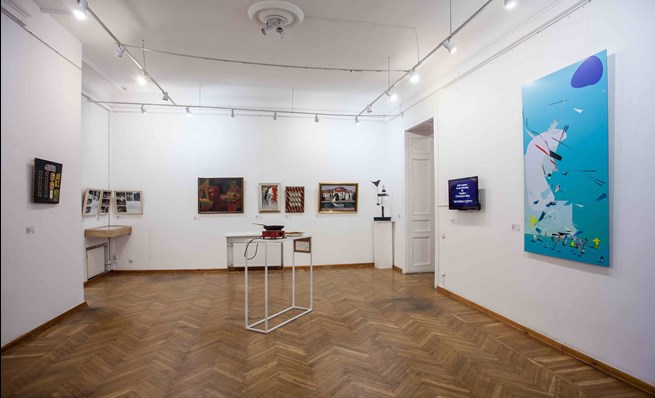
Odessa art of the XXI century. The interior of one of the halls.
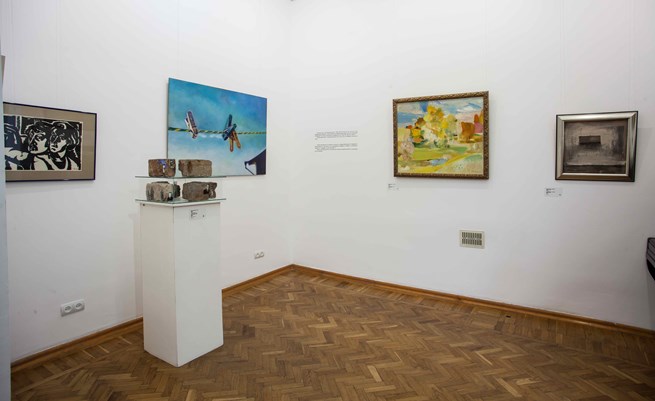
Point of view.The interior of one of the halls.
AD: What are your personal preferences in contemporary art?
SK: I like art which makes you think. Across the Ukraine there is a focus on conceptualism and the modern currents that are based on it.
AD: What is your favorite museum (aside from MoOMA)?
SK: Tate Modern (London).
AD: How do you assess the role of photography as one of the mediums of contemporary art? How was the exhibition "Non-Abstract Photography" by Mikhail Palinchak perceived by your audience?
SK: For me, photography is one of the mediums of visual art. Mikhail's exhibition impressed me not only with the high level of the exhibits (that was to be expected), but also with high class curatorial work, which manifested itself in the selection of works and the organization of the exposition. It was fine work from the artist (Mikhail Palinchak) and from the curator from Kiev (Dmitry Bogachuk) and from Odessa (Victoria Velikodomenko).
AD: What exhibitions / events do you plan to do in the near future?
SK: Our Museum will be 10 years old in April. We are preparing an extensive program to mark the anniversary!

ArtDependence Magazine is an international magazine covering all spheres of contemporary art, as well as modern and classical art.
ArtDependence features the latest art news, highlighting interviews with today’s most influential artists, galleries, curators, collectors, fair directors and individuals at the axis of the arts.
The magazine also covers series of articles and reviews on critical art events, new publications and other foremost happenings in the art world.
If you would like to submit events or editorial content to ArtDependence Magazine, please feel free to reach the magazine via the contact page.